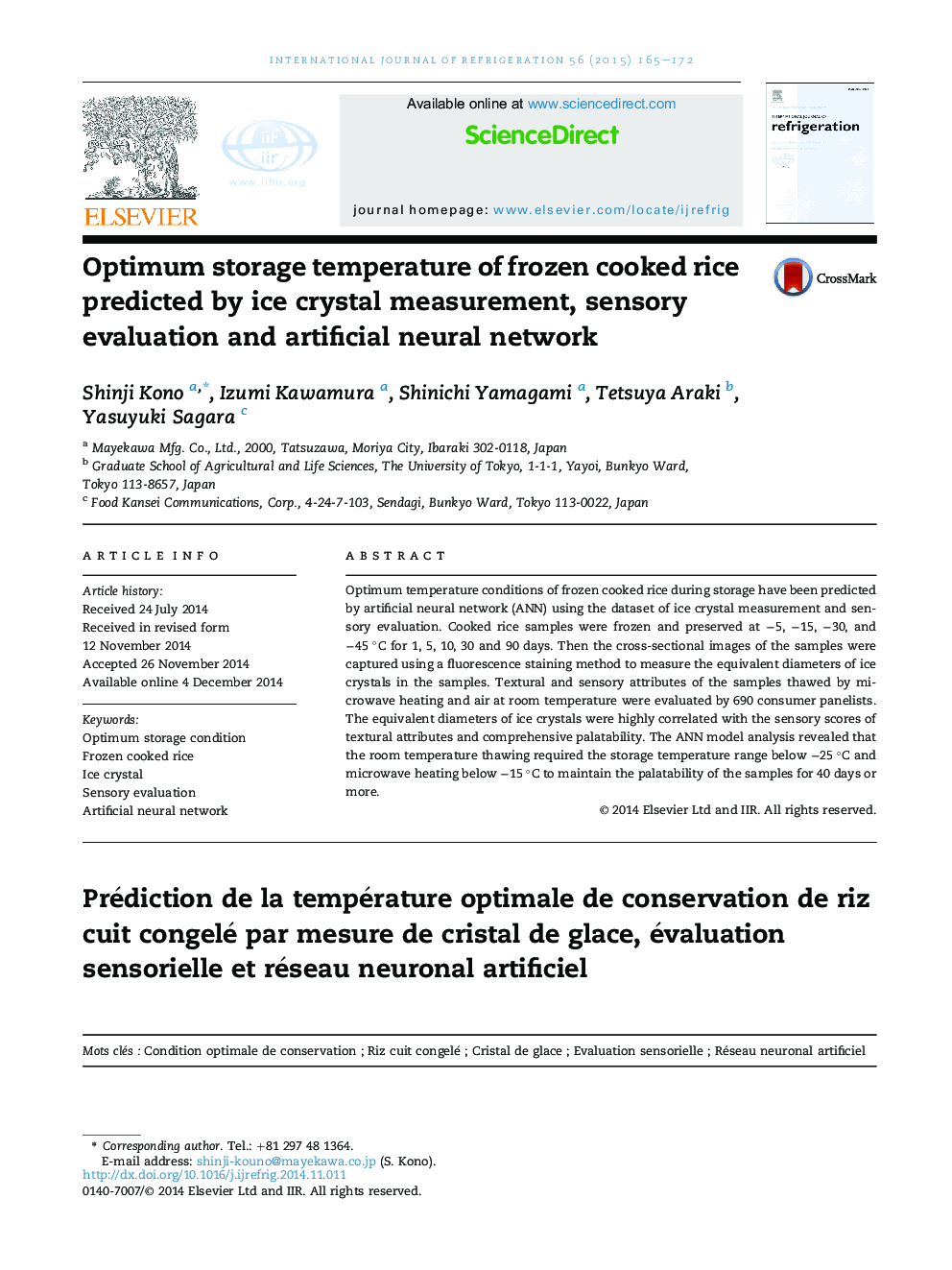| Article ID | Journal | Published Year | Pages | File Type |
|---|---|---|---|---|
| 788647 | International Journal of Refrigeration | 2015 | 8 Pages |
•A fluorescence staining method was used for the measurement of ice crystals.•Freezing and storage temperatures significantly affected the ice crystal morphology.•The ice crystal size varied inversely with the palatability scores.•The model provides a useful methodology to identify the quality of frozen cooked rice.
Optimum temperature conditions of frozen cooked rice during storage have been predicted by artificial neural network (ANN) using the dataset of ice crystal measurement and sensory evaluation. Cooked rice samples were frozen and preserved at −5, −15, −30, and −45 °C for 1, 5, 10, 30 and 90 days. Then the cross-sectional images of the samples were captured using a fluorescence staining method to measure the equivalent diameters of ice crystals in the samples. Textural and sensory attributes of the samples thawed by microwave heating and air at room temperature were evaluated by 690 consumer panelists. The equivalent diameters of ice crystals were highly correlated with the sensory scores of textural attributes and comprehensive palatability. The ANN model analysis revealed that the room temperature thawing required the storage temperature range below −25 °C and microwave heating below −15 °C to maintain the palatability of the samples for 40 days or more.
